The Truth About Cuba for Cruisers
Published 18 years ago, updated 7 years ago
Cuba allows us only two months sailing around their charming island with its affable people. After reading our last newsletter from Cuba in 2007 three sets of guests decided to visit from the USA, the last was to depart Cuba on May 13 2008, so we could not arrive in Cuba officially before March 13 2008. But, being restless to leave the USA we had another enjoyable sail to the Cuba coast, stopping in one of the many well-sheltered anchorages 60 miles from Havana- out of sight of the Guardia Frontier- where we enjoyed ourselves waiting for March 13 and the sail to Marina Hemingway to enter Cuba officially.
Every lobster belongs to the Government in Cuba, as do the lobster boats. These carry approximately ten “Marinero”, many of whom dive for the lobster which is exported or used in the vast tourist business. No Cuban has a right to eat or catch lobster as a private individual. The first day at anchor the crew of one of these Government boats threw six grand lobsters on our deck and anchored nearby. From the USA thrift stores and from friends we had the forward cabin full of clothing as well as 1946 Chevy parts and other goods, gifted by Miami Cubans for their family. Cubans are not allowed to step on visiting yachts, but we encouraged some of the fishermen to come over in their dinghy. They spend a month on these dilapidated 30 to 50 ft concrete boats, on which the reinforcing – which expands as it rusts – causes the concrete to pop off the hulls. These fishermen knew the ages of the children of all their crew members, so we handed out little dresses and shorts – gifts totally beyond their ability to buy on the equivalent of US$15 a month they earn. Yvonne chatted on in Spanish and interpreted to me all the jokes of these happy men.
A second group returned with a slab of spotted eagle ray and some turtle. We were aghast that such beautiful sea creatures were killed, but the Cubans pointed out they could not eat lobster every day for a month. The ray was a heavy textured non-fishy flavour, while turtle tastes of wild chicken. Word spread and we handed out many items of clothing as other boats came near us.
Whatever a person owned before the Castro revolution of 1959 he can keep and cannot really sell, for example, wonderful antique furniture and porcelain, houses cars and boats. Privately owned boats can fish providing the owner pays permission taxes. So a 17 footer with a single cylinder Chinese diesel would come pop-popping by and offer us fish and almost become belligerent when Yvonne offered them a return gift. In their poverty, they just wanted to come near our boat, an object beyond their wildest dreams, and chat. They always said they did not expect a gift just for a fish.
Thus we did not fish during our wait for March 13 as our freezer filled up. We sailed the 60 miles to Marina Hemingway, which is about 15 miles to the west of Havana. Small foreign craft is not allowed into Havana unless a strong northerly makes the entrance to Hemingway untenable.
Calling the marina on CHANNEL 72, we were directed to the “checking in wharf”. Many yachties become frustrated with Cuba’s check-in process, but we find it enjoyable to meet all the delightful people who step aboard after removing their boots (tell that to the USA coastguard!). Firstly came an elderly doctor who sat with us drinking tea after asking questions about our health and completing the paperwork in triplicate after we loaned, then gave him, a pen. The rest waited patiently on the wharf. The vet was next, he asked about rats and any vermin, then invited us to his house. The three Customs officers followed and, after asking permission, a sniffer dog spent 20 minutes gallivanting about our boat. One of the officers made me follow him every minute as he “searched’” our boat, even pulling out drawers and looking at our cd collection, while the others chatted with Yvonne. The Port Master followed. Then port officials asked for our flares. These they counted several times as we checked them, then gave us a receipt so that we could collect them as we left Hemingway. The total cost of entry including the second-month immigration extension was $125.
I emailed the Commodore of the marina asking the cost of dental care and for him to make an appointment for me. In the USA I was quoted US$4,500 for a new bridge. In the excellent Cuban Government dental clinic the first dentist also said repair was impossible, then a delightful professor followed by five students fixed my bridge. My two broken teeth that held the bridge, as well as the bridge itself, were like new in 2 hours Cost US$25. So everyone who met a toothless Bernie in the USA, rest assured, I can smile again and am back to my very handsome self. I had a tooth totally rebuilt for US$65 too, instead of having to have a crown. (One crown is $300 I was told by a man who had 23 crowns done).
We had all sorts of goods for Cubans living in Havana and, in one case, enjoyed a whole family admiring new parts for their immobilised 1946 Chevrolet. As a consequence we stayed a week in Hemingway Marina at US$20 a night, to accept their hospitality. It is not allowed to anchor off, so this was the longest we have lived in a marina in the 15 years we have been on Australia 31. It saddened me that our new friends were not allowed closer than 100 yards to our boat so we could not return their hospitality. However, they love their country and their families are very close. I asked many people who all complained about their predicament of low salary and government controls (the same as you complain about your Government) if they could escape as a family tomorrow, would they leave. Only one family of the dozens I asked this question said yes. The others have a love for Cuba and hope things will change.
We were told that already Raoul, Fidel’s brother, allows Cubans to stay at the resort hotels. “At US$120 a night, this means if I work for 7 months I will earn enough to stay one night”, one person said laughing. “But maybe when Fidel dies more changes will come. Raoul seems to realise the people’s plight, whereas Fidel only wanted to show foreign countries all was well.”
Briefly, Cuba has currency for the Cubans (Pesos) and currency for Tourists and all luxury items (CUC). Twenty four Cuban pesos equal one CUC (or Cuban convertible). Sadly luxury items are toothpaste, soap and much of the clothing. A Cuban earning 300 Cuban Pesos a month has to live before converting his pesos to CUC to buy clothes. Thus these items are virtually unobtainable to the locals unless they go outside the system illegally to make money, as most do. For example, dive for the prolific lobster and sell them to a hotel.
The lucky Cubans have a cousin in Miami. To our advantage, as we bought local pesos, an 8-inch pizza cooked in a converted 55-gallon drum on a street corner was 20 cents and an ice cream made on a street corner, the little gas engine driving the compressor popping away, was one cent. Tourists are not allowed to carry Cuban pesos, but we needed them to go to produce markets and buy meals at very cheap, but excellent, Cuban-only restaurants. There are even Cuban-only taxis and when one of our friends hailed a Cuban share taxi at 5 local pesos, the driver saw I was foreign and put me out telling me he could be jailed for carrying me and I should pay a tourist taxi at 10 CUC (48 times the cost) for the journey. I was told by my friend never to talk in a Cuban taxi and the next taxi took us the 7 miles at 5 pesos a person.
Prices for tourists are the same as in the USA. Most tourists, including the hundreds from the USA, are enslaved in all-inclusive resorts, never meeting any Cubans. Again this was good for us, as no barman would accept our money when we called by for a beer, saying it was included. We tested this satisfactorily, after finding “better” clothes, with meals and floor shows on one occasion.
Attached again to the check-in wharf at Hemmingway, we checked out for the most western port of entry and ports intermediate. Boats have to check in and out of every port, so although we knew we would not get as far as Maria La Gorda, we put this as our destination and on our list named every bay in between, so we could visit them if we so desired. Again, customs searched our boat and were most upset when I asked were they looking for Cubans when a drawer was pulled out. A long explanation in rapid Spanish, that I did not understand, made me realise irreverent Australian humour was uncalled for.
We headed for Cayo Paraiso and wound our way into anchor when a fast cigarette boat with Guardia Frontier told us it was a forbidden anchorage and we must move about 10 miles. Apparently, two dinghies behind sailboats were stolen there and ended up in Florida. We explored the village of La Esperanza meeting Sandra, a delightful buxom female (Cubans often complain about the lack of food but we did not see skinny ones). She cooked us an evening meal on three occasions and we gave clothing in return. Walking beaches and enjoying our favourite pastime, bird watching was rewarding as was exploring far up mangrove creeks in the dinghy.
All too soon it was time to sail to Varadero to collect our first guests. On the way East we stayed overnight in Marina Hemingway to find it is the only Marina in Cuba that has a midday checkout. We arrived at 1000 one day and checked out at 1700 the next day for the overnight sail, and were charged for two days – which was not on our meagre budget! Sailing overnight to Varadero to the east, we found the coast was wall-to-wall towns and as we were only 4 miles offshore the path was easy to follow.
We decided to check in at Gaviota Marina as it is 12 miles northeast to windward of the normal marina. Formalities here were repeated, customs, port authorities and immigration. Our guests flew in (via Mexico as Mr Bush needs the Miami Cuban votes) and more formalities occurred as they were searched by customs and added to the crew list. It is easy to have guests aboard in Cuba and they are removed from the crew list and luggage searched as they leave. Passports are never stamped – you have just issued a visa on a separate document. As we had six sets of visitors, we made good friends of these delightful authorities. All trash from overseas vessels is electrically incinerated and the ladies from health asked for it. When I said my trash was Cuban, they replied that they never get a chance to use the incinerator which is fun so our trash is foreign. Paperwork is Cuba. Three receipts to buy diesel but at far less than USA prices, it is worth the effort.
Each time we sailed east from Gaviota with our guests in sheltered waters and really enjoyed showing them how we have spent and enjoyed the last 15 years. Highlights were having Cuban fishermen aboard for a rum party. We had stocked up with 10 litres of local rum. The bar we bought from had a great barrel of it and every night after work Cubans of all shapes, sexes and ages cycled or walked up with a container and rum was measured into it in 100 ml lots. As we bought 60 x100 ml lots, there was a long laughing and complaining line of locals waiting. Cubans have to wait, days for buses, hours for bread or rice, and never seem to complain. Lobster and fish were showered upon us although they were easy to catch. One guest hauled in a fish over 10 lbs every ten minutes as we sailed. Any large North Coast fish can have ciguatera, whereas the South Coast does not have this problem, thus fish over 4 lbs were returned to the ocean.
The Guardia Frontier officials were rowed out to us on commandeered fishing boats and checked our papers as we progressed. The North Coast, as compared to the South of Cuba, seemed to have more officials and we were not allowed to visit many towns on the mainland. We used the excuse we needed food to get into some towns, but at one this excuse was rejected and we went back to Australia 31 about five miles away. Four hours later three young men arrived paddling a vessel very common in Cuba. Two large inner tubes were cut and had the ends sewn to keep the air in. A wooden frame with two sets of rowlocks was tied to the long inflated tubes. We often saw these craft miles out at sea. These lads bought us an enormous variety of vegetables from their garden. Recently people are allowed to grow vegetables and sell them at the new markets. They pay some licence fee. Cuba, the fertile land (The USA’s second President, Adams, in the 1700s said he would swap Cuba for the bottom three states), lies mainly unproductive. People will not work for a pittance and have no incentive to grow food for the Government, thus most of the land lies unproductive. There are enormous Government farms, but being run by a Government they can never be as efficient as private enterprise. We saw and bought from many private vegetable farms. In the towns, one has to buy what is available. On one day the market will have potatoes and beans, the next a great variety of fruits and veggies. It depends who comes to sell. Food is more readily available since the legal allowing of private farms.
Every shop is owned by the Government full stop. We saw a woman with a sewing machine in a shop, along with a bookkeeper to take the money for her work, such are the inefficiencies of communism. Both get a salary of about $15 a month. All medical is free and is of a standard 39th in the world (the USA, for example, is 38th). Each month some food is subsidised, but not enough to last a person the whole month. For example, 5 eggs are allowed per person each month and any extra is purchased at about 5 times the subsidised price. However, we did not see starving Cubans and obesity is a problem, although one person told us every Cuban has blood pressure caused by worrying about where his next meal is coming from.
Because we had to base at Varadero we did not go far along the North Coast. In fact, we will return after the hurricane season and sail far along the North Coast before entering Cuba, which will enable us to sail slowly from one of the thousands of islands to the next with the trade winds behind us, instead of beating to the east as we had to do. This is what we did on the South Coast and this is why I enjoyed it more. (Gentlemen, like me, never go to windward).
Our highlight was a week in a car intensely bird watching with two friends, who are professional ornithologists, and a Cuban ornithologist who was also the author of “Birds of Cuba” book. I have wonderful bird photographs and Yvonne was overjoyed being with three others just as fanatic as she is about birds. We saw 101 of Cuba’s 300 birds in the week, many of which are endemic. My favourite was the Tiny Tody.
One final point – the internet in Cuba is VERY SLOW and priced for tourists in hotels, yet forbidden for locals.
Bernie and Yvonne – Australia 31 www.berniekatchor.com [Broken Link]



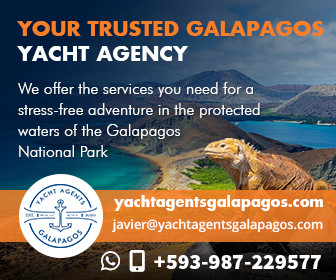
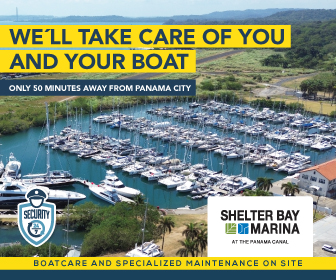
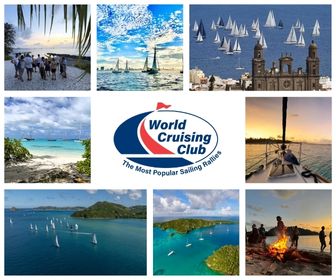
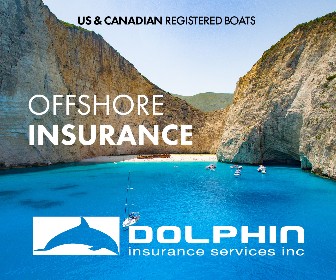
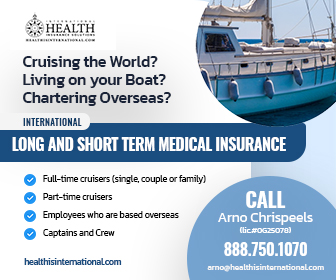

Hi Mark, we have spoken with Sr. Escrich, Commodore of the Hemmingway Yacht Club, and he’s confirmed that Cuba DOES NOT require visiting yachts to be insured. Not sure where you heard that from, but it’s not the case.
I have heard that Cuba requires you to have insurance on your boat as well as health insurance. The health insurance is not a problem as you can buy that from them @ $3.00/day, but what about insurance on the boat. Most companies will not ensure the US-flagged vessel travelling to Cuba. What have others done?
Thanks